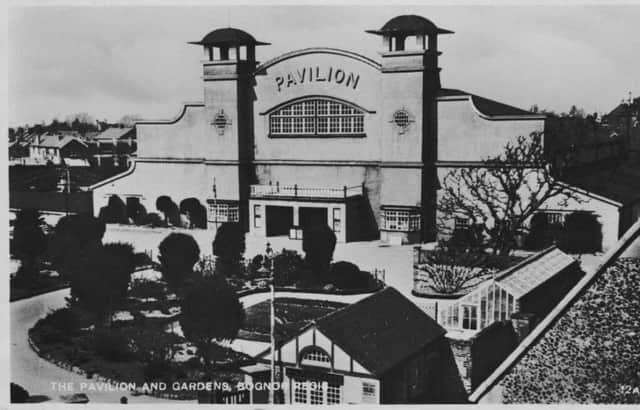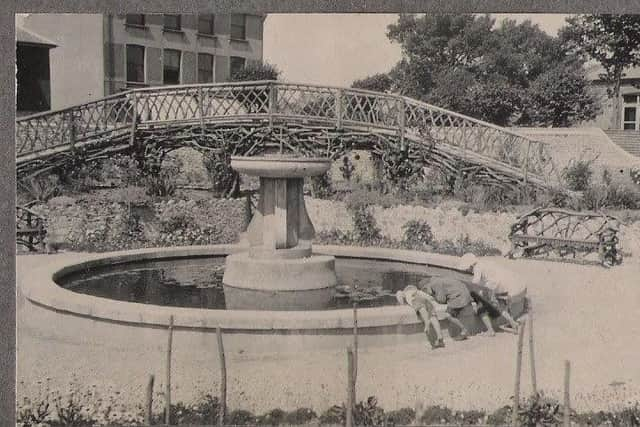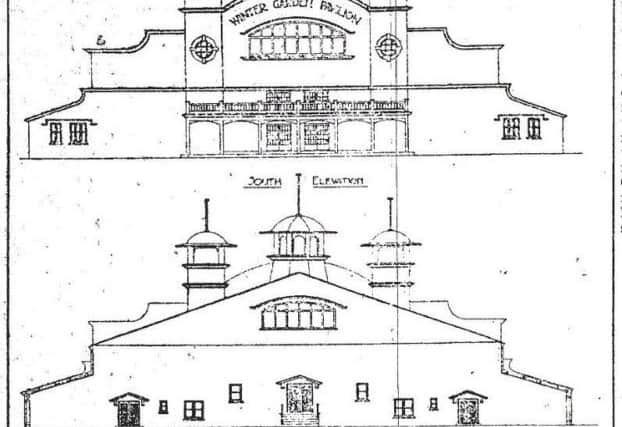So many sweethearts met at the Bognor Pavilion


It was situated in West Street, at the northern end of Waterloo Square and started life as an aeroplane shed.
In the early 1920s, the Norman Thompson Seaplane Factory in Middleton on sea, became unnecessary, due to cancelled orders.
Apparently its aeroplane sheds were for sale for £1,000.


Advertisement
Hide AdAdvertisement
Hide AdIn 1921 the Bognor Urban District Council purchased the largest and had it re-erected at the north of Waterloo Square and this was to become the very popular Pavilion.
In the Observer & West Sussex Recorder, April 1923, there was a detailed description of the Pavilion by Oswald A Bridges, engineer and surveyor with the council.
It stated: “Bognor is one of the few towns which have benefited by the purchase and adaptation of buildings used in the Great War.”
The council had originally considered having a Pavilion in the town in 1914, on newly purchased property near the Rock Buildings.


Advertisement
Hide AdAdvertisement
Hide AdThe 1923 newspaper report said the building measured 173 feet in width and 142 feet in length and contained 23,900 feet of floor space.
It could seat 3,500 people in comfort and had a ballroom for 1,500 people with the best dance floor in the south of England.
From conversations I have had with local people, it would also appear that when the dances were at their height, the majority of Bognor residents met their partners there – where do they go now?
The Pavilion was to be host to all the entertainment events in the town during the 1930s and included all the popular stars of the time such as Gracie Fields, Paul Robeson, Max Miller and the Western Brothers.
Advertisement
Hide AdAdvertisement
Hide AdIt was such a popular venue that in addition to concerts, exhibitions and most other town events were also staged there.
The Pavilion catered for many people with a sports interest, even throughout the winter providing indoor bowls, and badminton.
Many people have memories of the Pavilion, including one lady who in 1980 wrote a poem about it.
It included the memory: “Inside the ceiling was hung with looped silk and the great dance floor was polished like glass.”
Advertisement
Hide AdAdvertisement
Hide AdHer poem also described the council meetings, choral events, stage shows and boxing in addition to the gala nights.
The Pavilion continued to be very popular, especially with their party catering, until 1948 when disaster struck.
On July 12 a fire started in the base of one of the towers, and it spread to the right hand side of the roof before the fire brigade managed to get it under control.
The town’s people, who could not believe what was happening, watched in amazement.
Advertisement
Hide AdAdvertisement
Hide AdOne 15-year-old boy, who had returned from his school in Chichester by train, recalled seeing the black smoke while waiting for the train in Barnham.
He wrote in his diary: “At 4 o’clock the Bognor Pavilion caught fire. After school I went to watch it.
“Terrific lot of flames. Hundreds of people watching.
“I helped to clear things away from the Pavilion. Firemen got it under control about 5.30pm.”
For the next 16 months there were many discussions with the council on the future of the Pavilion including a reconstruction scheme costing in the region of £76,000.
Advertisement
Hide AdAdvertisement
Hide AdHowever none of the plans came to fruition and eventually it was sold, prior to its demolition in 1949.
However it is not only the Pavilion that evoked so many memories. There were other features around this area, namely the boating pool in the shape of England and Wales.
The Marchioness of Cambridge had first visited the town in 1929 and eventually bought a property in Craigweil.
She was accompanied by her daughter Lady Mary Cambridge when she opened this new pool on April 12 1937.
The first model yacht to be launched was named Lady Mary.
Advertisement
Hide AdAdvertisement
Hide AdThe pool was to be named the Princess Elizabeth Boating Pool, and was to be enjoyed by children for many years.
Another feature within the Pavilion gardens was a sunken garden, where a fountain played into a lily pond.
This had been formed in the mid 1930s when two 18th century terraces were demolished and the area became part of the Pavilion gardens.
Above this was a rustic bridge, and it was often written that this was a “beautiful area and a joy just to be able to sit”.
Advertisement
Hide AdAdvertisement
Hide AdIn addition to the above, there was also a refreshment area and very pleasant restaurant, which was attached to the side of the Pavilion and was much frequented by town people and holidaymakers alike.
I was not in the town when all the facilities were available, but am bowled over by the amount of memories that are always evoked years later, by the mention of the name the Pavilion.
Don’t miss out on all the latest breaking news where you live.
Here are four ways you can be sure you’ll be amongst the first to know what’s going on.
1) Make our website your homepage
2) Like our Facebook page
3) Follow us on Twitter
Advertisement
Hide AdAdvertisement
Hide Ad4) Register with us by clicking on ‘sign in’ (top right corner). You can then receive our daily newsletter AND add your point of view to stories that you read here.
And do share with your family and friends - so they don’t miss out!
Always the first with your local news.
Be part of it.